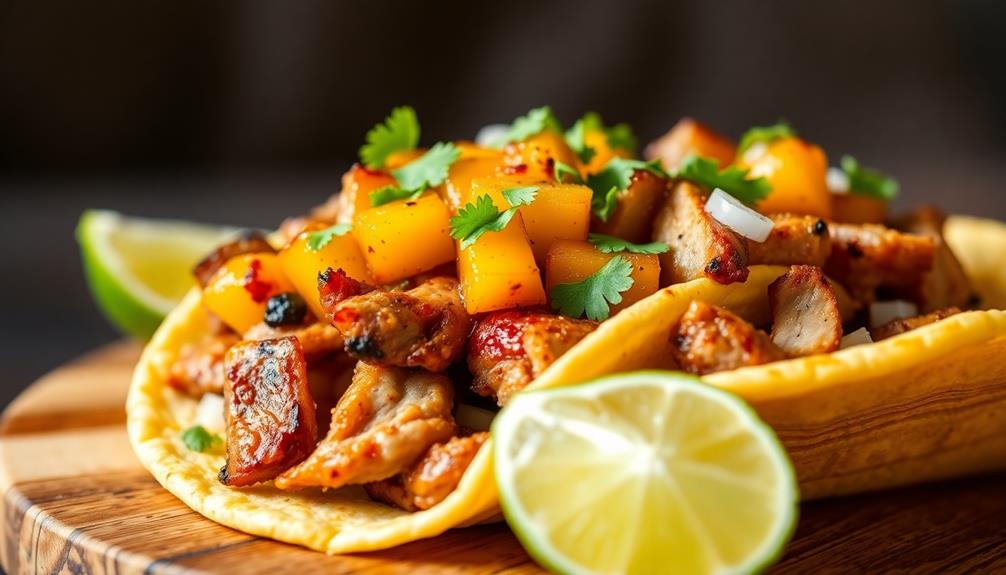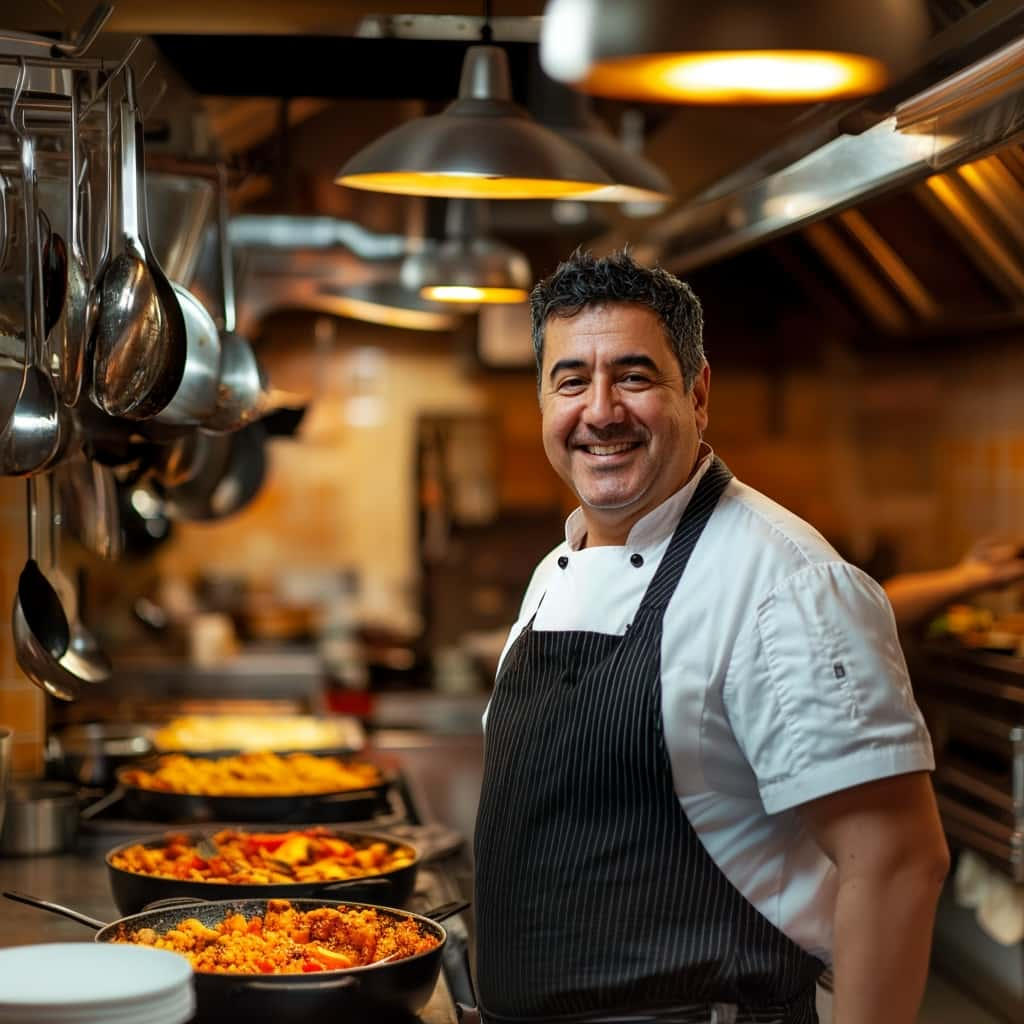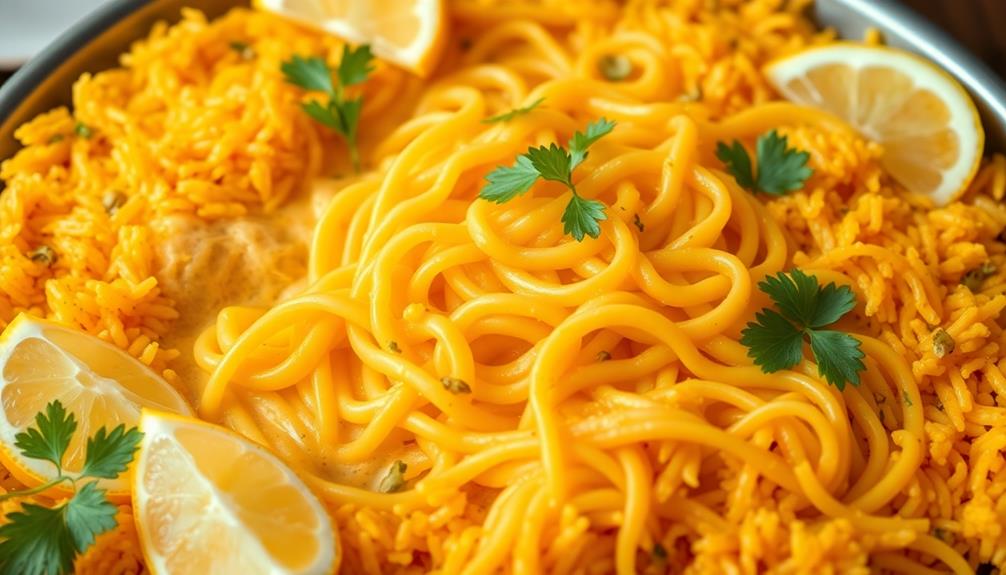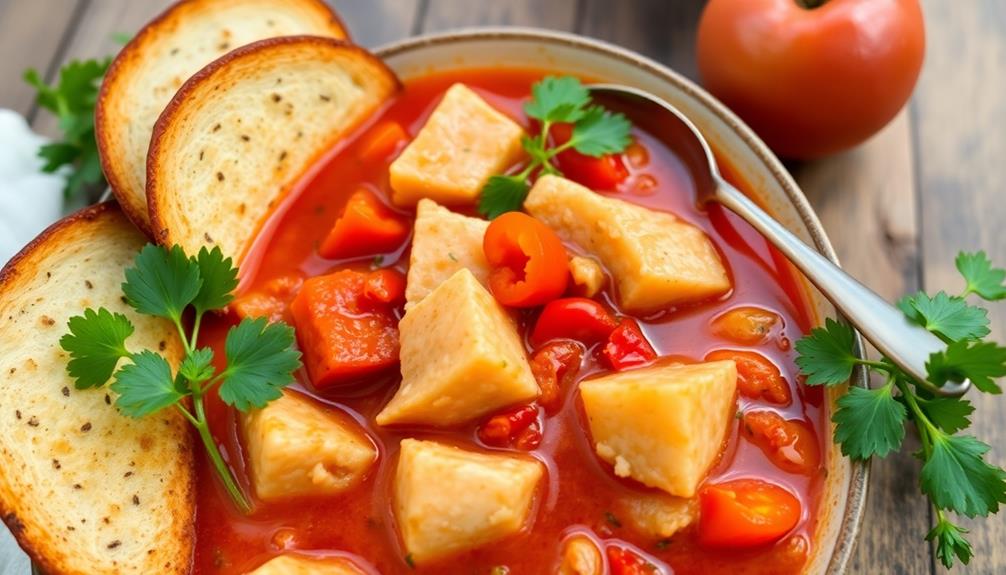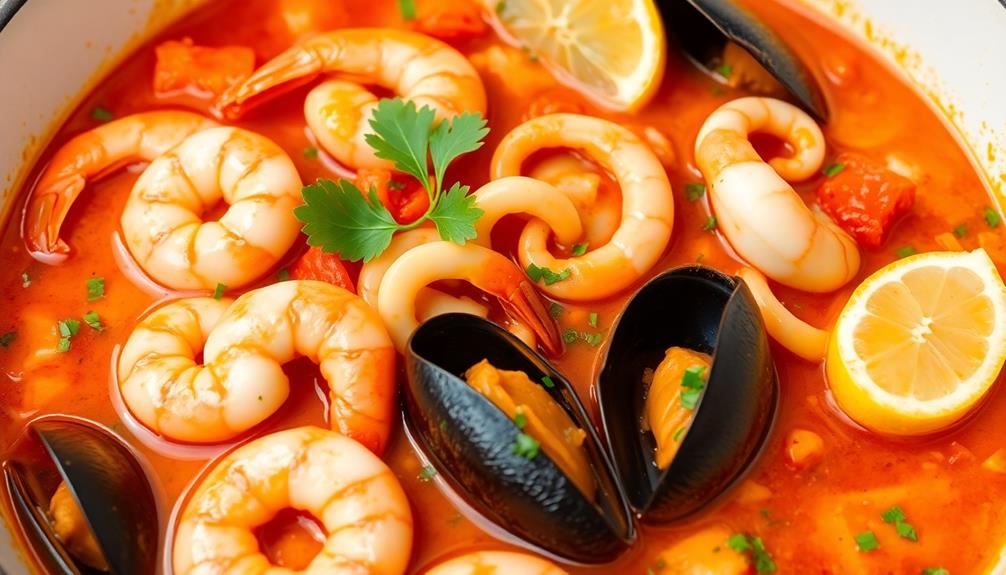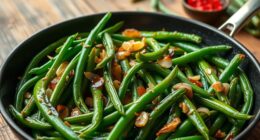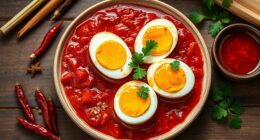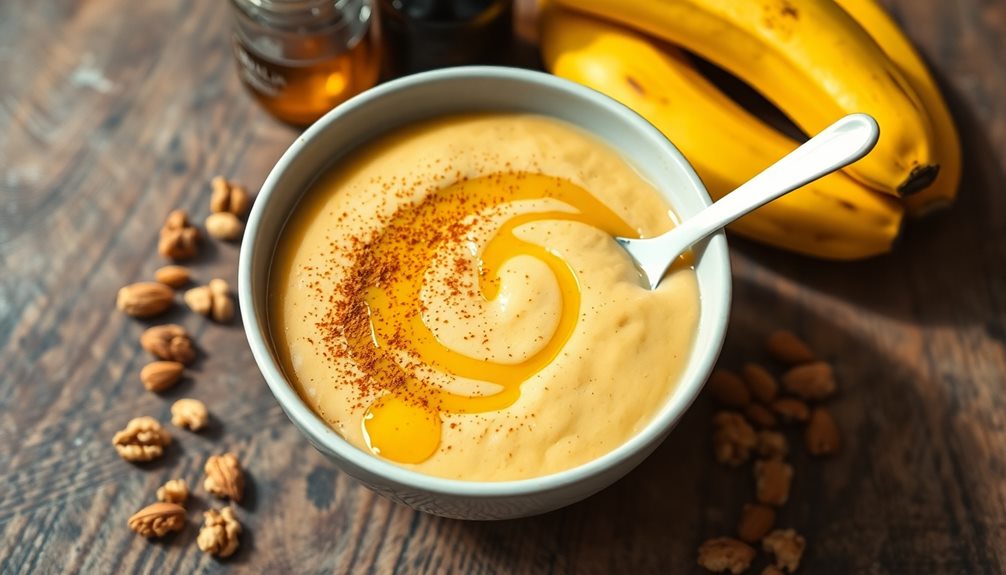Cava is a beloved Spanish sparkling wine that originates from the Penedès region of Catalonia. Made using the traditional Champagne method, Cava captivates with its effervescence, crisp acidity, and delightful flavors of apple, pear, and citrus. The production process involves a secondary fermentation in the bottle, which enhances the wine's complexity and character. Cava's versatility makes it a refined choice for celebrations and casual gatherings alike, pairing beautifully with seafood, tapas, and even desserts. Whether served chilled as an aperitif or incorporated into creative cocktails, Cava's sophisticated style is sure to impress. To discover more about this enchanting Spanish sparkling wine, keep reading.
Key Takeaways
- Cava is a Spanish sparkling wine originating from the Catalonia region, primarily made from indigenous grape varieties like Macabeo, Xarel-lo, and Parellada.
- The production process involves secondary fermentation in the bottle, aging on lees, and manual disgorging, contributing to Cava's distinctive crisp and refreshing profile.
- Cava is recognized for its balanced flavors, ranging from apple, pear, and citrus to toasty and nutty notes, and varying sweetness levels from brut nature to semi-seco.
- Cava is versatile in pairing with a wide range of cuisines, from seafood and tapas to desserts, and can also be used as a base for creative cocktails.
- Cava has gained global recognition and popularity as a sophisticated sparkling wine option, often associated with Spanish celebrations, traditions, and a lifestyle of elegance.
History
Cava, the renowned Spanish sparkling wine, traces its roots back to the late 19th century. It all started when a Catalan winemaker, Josep Raventós, visited the Champagne region of France and was inspired to create his own version of the famous French bubbly.
Raventós returned home and began experimenting with the traditional Champagne method, using local grape varieties like Macabeo, Parellada, and Xarel-lo. The first bottles of Cava were produced in 1872, and over the next few decades, the industry grew steadily.
Today, Cava is produced in various regions of Spain, with the Penedès area in Catalonia being the most famous. Cava's production method, which involves a second fermentation in the bottle, gives it a distinctive taste and aroma, often described as crisp, dry, and refreshing.
Whether you're celebrating a special occasion or simply enjoying a casual moment, a glass of Cava is sure to add a touch of Spanish flair to your festivities.
Recipe
Cava, the sparkling wine from Spain, is a versatile beverage that can be enjoyed on its own or incorporated into a variety of recipes. Whether you're hosting a special occasion or looking to add a touch of elegance to your everyday dining experience, a Cava-based recipe can be a delightful addition to your culinary repertoire.
One classic way to showcase the refreshing and lively character of Cava is in a Cava Cocktail. This simple yet sophisticated drink is perfect for setting the tone for any gathering or as a pre-dinner aperitif.
- 1 bottle of Cava
- 2 ounces of your preferred fruit juice (such as orange, grapefruit, or cranberry)
- 1 ounce of a liqueur (such as Cointreau or St-Germain)
- Fresh fruit or a twist of citrus for garnish
To prepare the Cava Cocktail, simply combine the Cava, fruit juice, and liqueur in a chilled champagne flute or coupe glass. Gently stir to combine and garnish with a slice of fresh fruit or a twist of citrus. The effervescence of the Cava, coupled with the sweetness of the fruit and the subtle complexity of the liqueur, creates a delightful and refreshing beverage.
When preparing a Cava Cocktail, it's important to use a high-quality Cava to ensure the best possible flavor and aroma. Additionally, be mindful of the proportions to achieve the perfect balance of flavors.
Experimenting with different juice and liqueur combinations can also be a fun way to explore the versatility of Cava in cocktail-making.
Cooking Steps
Manually cap each bottle's cork to seal in the fizz.
Allow the bottles to chill, then gently shake them to distribute the bubbles.
Uncork the bottles carefully, and pour the bubbly Cava into your glasses, ready to enjoy!
Step 1. Manually Cap Each Bottle's Cork
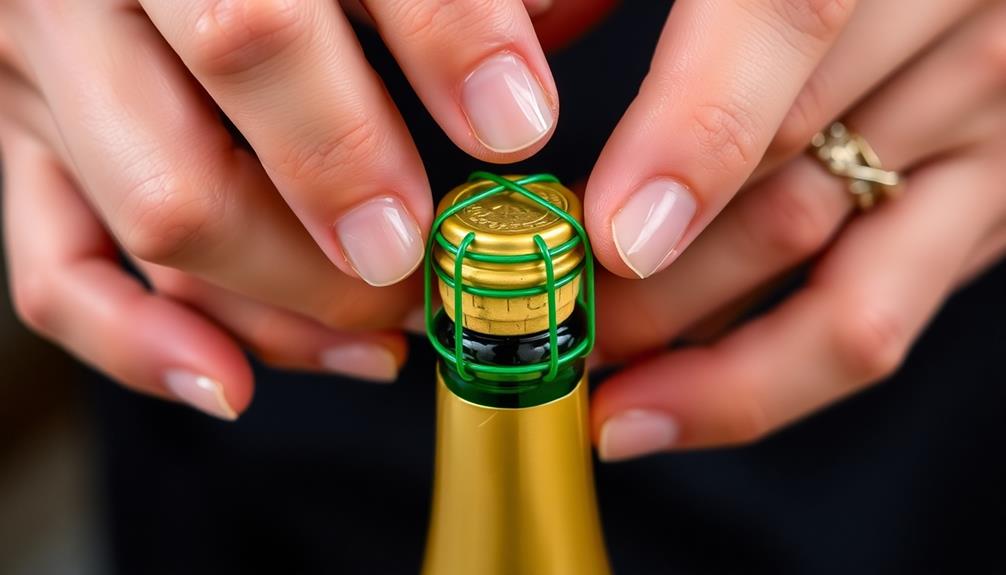
Capping each bottle's cork manually is the final step in the Cava production process. This delicate task is carried out with great care to ensure the perfect seal and presentation of the sparkling wine.
First, you'll need to carefully place the cork into the bottle's neck, ensuring it's centered and snug. Then, using a specialized capping tool, you'll gently press down on the cork, securing it in place. Be sure to apply even pressure to avoid any tilting or misalignment.
Once the cork is firmly in position, you'll add the metal cage that helps hold it securely. Finally, you'll tuck the wire cage's ends neatly under the bottle's lip, completing the process.
This meticulous manual capping preserves the Cava's carbonation and quality, allowing you to enjoy the perfect glass of sparkling delight. With each bottle sealed with care, the Cava is ready to be enjoyed.
Step 2. Allow the Bottles to Chill

After carefully capping each bottle, the next step is to allow the Cava to chill. Chilling the sparkling wine is crucial to achieve the perfect serving temperature and enhance its refreshing flavors.
Place the bottles in the refrigerator, making sure they're positioned upright to prevent any loss of carbonation. Depending on the size of your fridge, you may need to rearrange other items to fit the Cava bottles comfortably.
Allow the Cava to chill for at least 2 hours, but no more than 4 hours. This will bring the temperature down to the recommended range of 45-50°F (7-10°C), which is ideal for serving.
You can check the temperature by gently placing your hand on the bottles. If they feel chilled but not icy cold, they're ready to be enjoyed.
Step 3. Gently Shake the Bottles
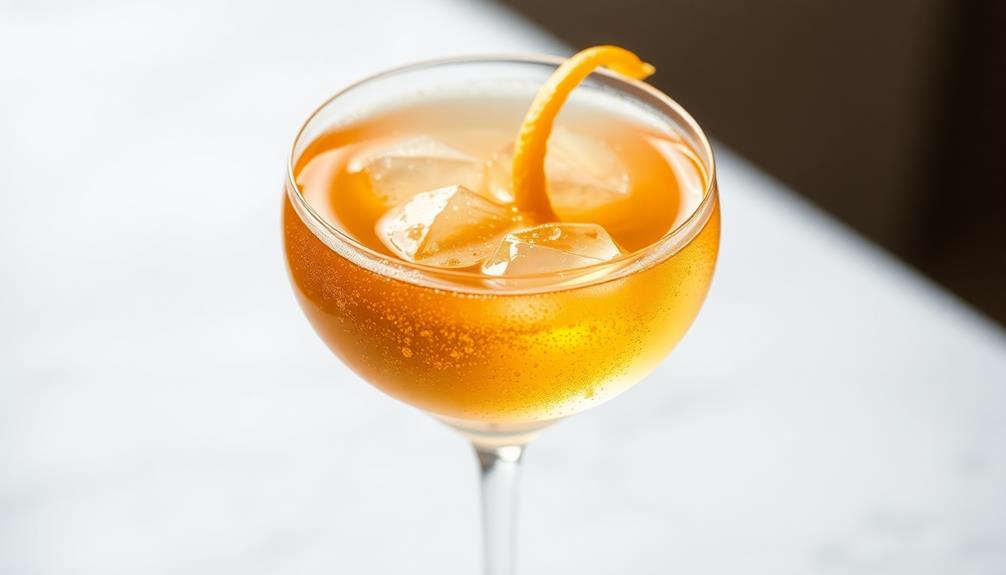
Gently shaking the chilled bottles helps to distribute the yeast sediment evenly throughout the Cava. This step is essential for achieving the perfect balance of flavors and textures.
First, hold the bottle at a 45-degree angle, with the label facing up. Using both hands, gently rotate the bottle back and forth about 10-15 times. This circular motion ensures the sediment integrates without creating too much agitation.
Next, return the bottle to an upright position and give it a gentle side-to-side shimmy 5-7 times. This final motion helps settle any remaining particles.
Be careful not to shake the bottle vigorously, as this can cause the Cava to become overly foamy. The goal is a delicate, controlled movement that evenly distributes the yeast without excessive effervescence.
Once shaken, your Cava is ready to be served and enjoyed!
Step 4. Uncork the Bottles Carefully

With the Cava gently shaken, it's time to carefully uncork the bottles.
Hold the bottle at a 45-degree angle, pointing it away from yourself and any guests. Use your thumb to slowly release the wire cage around the cork. Gently twist the bottle while maintaining steady pressure on the cork.
As it begins to release, keep a firm grip and allow the cork to come out smoothly and quietly. Don't let the cork pop! Popping corks can cause the wine to spray, wasting precious bubbles.
Once the cork is out, pour the Cava into chilled glasses, filling them about three-quarters full. This allows room for the wine to expand and release its delightful effervescence.
Serve immediately and enjoy the crisp, refreshing flavor of your perfectly uncorked Cava.
Step 5. Pour Into Glasses

Once the cork is out, you can pour the Cava into the chilled glasses.
Hold each glass at an angle and slowly tilt it back upright as you fill it. This helps the sparkling wine cascade down the side, creating a lovely, foamy head. Fill the glasses about three-quarters full to leave room for the bubbles to form.
Be gentle when pouring to avoid excessive frothing. The ideal pour should produce a thin, steady stream of Cava.
As the glasses fill, you'll see the bubbles begin to dance and rise to the surface, adding a festive sparkle.
Once all the glasses are filled, you can admire the golden hue and delicate effervescence of the Cava before taking your first sip.
Enjoy the crisp, refreshing flavor and the celebratory mood the sparkling wine brings to any occasion.
Final Thoughts
As you've explored the world of cava, the Spanish sparkling wine, you've likely gained a deeper appreciation for its unique qualities and the craftsmanship behind its production.
From its traditional method of fermentation to the diverse range of styles and flavors, cava has proven itself to be a versatile and delightful beverage.
When selecting a cava, consider the occasion and your personal preferences.
Brut cavas with their crisp, dry profiles make for excellent aperitifs, while more full-bodied reserva or gran reserva cavas can complement a wide array of foods.
Don't be afraid to experiment and discover your favorite cava pairings.
Whether you're hosting a celebratory gathering or simply enjoying a quiet moment, cava is the perfect choice to elevate the experience.
Its effervescence and balanced flavors make it a refreshing and sophisticated option that's sure to delight your senses.
Embrace the art of cava and let it become a cherished part of your culinary and social experiences.
Frequently Asked Questions
What Is the Difference Between Cava and Champagne?
The key difference between cava and champagne is their region of origin. Champagne can only be produced in the Champagne region of France, while cava is a Spanish sparkling wine made using the traditional method as in Champagne.
How Long Does Cava Typically Need to Age?
Typically, cava needs to age for a minimum of 9 months, though some producers may age it for up to 24 months to develop more complex flavors and a creamier texture. The longer the aging, the richer the final sparkling wine.
What Are the Most Common Cava Grape Varieties?
Typically, the most common cava grape varieties are Macabeo, Parellada, and Xarel-lo. These Spanish white grapes provide the base for this sparkling wine, creating a balanced and lively final product. This traditional blend of grapes delivers a crisp and refreshing flavor profile that pairs perfectly with a variety of dishes. The combination of these grape varieties is also used to create the renowned white wine from Txakoli, a regional specialty in the Basque Country of Spain. The unique characteristics of these grapes add depth and complexity to both cava and Txakoli, making them distinct and beloved choices for wine enthusiasts.
Is Cava a Good Option for Special Occasions?
Absolutely, sparkling wine is a fantastic option for special occasions. Its vibrant bubbles and crisp, refreshing flavors make it the perfect celebratory drink, whether you're toasting a milestone or ringing in the new year.
How Does the Production Process of Cava Differ From Other Sparkling Wines?
The production process of cava differs from other sparkling wines in that it undergoes a secondary fermentation in the bottle, resulting in a more complex and refined flavor profile. This traditional method gives cava its distinct character.

